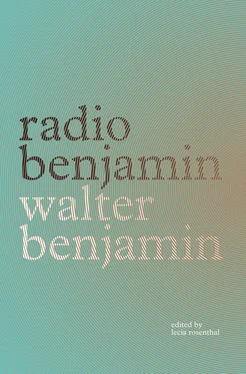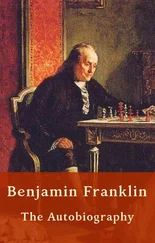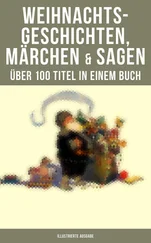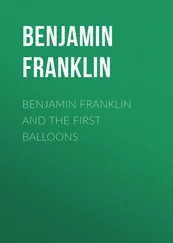The tricks bootleggers have devised to deliver their booze defy the imagination. Dressed as policemen, they cross the border with whiskey stowed in their helmets. They organize funeral processions, just to get coffins packed with liquor over the border. They wear rubber underwear filled with alcohol. They hire people to sell restaurant-goers dolls or fans with bottles of liquor inside. Almost any object, no matter how harmless — an umbrella, camera, or boot tree — can make the customs police suspect that there may be whiskey inside. The police, and ultimately the Americans as well. There’s a wonderful story of a train station near New Orleans. Little Negro children 6walk along the train that stops there, hiding under their clothing variously shaped containers with large labels that read “Iced Tea.” One passenger gives a nod and for the price of a suit buys the container, which he then cleverly conceals. Then another one, then ten, twenty, fifty. “Whatever you do, ladies and gentlemen,” implore the Negro children, “drink the tea only once the train is under way.” Everyone winks knowingly … The whistle blows, the train drives off, and right away the passengers put the containers to their lips. And then their expressions turn to disbelief, as what they are drinking is actually real tea. 7
When American elections to the House of Representatives occurred a few weeks ago, Prohibition played a role. The elections revealed that it has many opponents. These opponents are not only, as you might think, those who want to get drunk, but also very intelligent, sober, thoughtful people, who are against laws that are broken by half the residents of a country, laws that make adults act like naughty children, who do something only because it’s forbidden, laws whose enforcement costs the state a tremendous amount of money, and whose violation costs many people their lives. Wholeheartedly for the retaining of these laws are the bootleggers, who have become rich as a result of them. But viewing this matter from afar, we Europeans will wonder whether Swedes, Norwegians, or Belgians, who have fought alcohol consumption less radically and with much milder laws, haven’t made more progress than the Americans with their violence and fanaticism.
“Die Bootleggers,” GS, 7.1, 201–6. Translated by Jonathan Lutes.
Broadcast on Radio Berlin, November 8, 1930, and on Southwest German Radio, Frankfurt, December 31, 1930. Benjamin dated the typescript “Radio Berlin, November 8, 1930,” and the Funkstunde announced the broadcast for this date from 3:20–3:40 pm. For December 31, 1930, the Südwestdeutsche Rundfunk-Zeitung announced its Youth Hour, from 3:00–3:25 pm, as “ ‘Die Bootleggers oder die amerikanischen Alkoholschmuggler’ [The Bootleggers, or the American Alcohol Smugglers], read by Dr. Walter Benjamin.”
1The Südwestdeutsche Rundfunk-Zeitung advertised Benjamin’s broadcast ahead of time as “Youth Hour: ‘The Bootleggers, or the American Alcohol Smugglers,’ read by Dr. Walter Benjamin.”
2During the 1920s, the “100 percent Americanism” movement promoted a nationalist, anti-immigrant, anti-communist, traditionalist ideology.
3See Pierre Mac Orlan’s fictionalized account in Les pirates de “ l’a venue du rhum”: reportage [The Pirates of “Rum Row”] (Paris: Sagittaire, 1925); Alkoholschmuggler, trans. Paul Cohen-Portheim (Berlin: Die Schmiede, 1927), 26ff.
4Mac Orlan, Alkoholschmuggler, 29ff.
5Ibid., 28ff.
6Benjamin uses the German “kleine Negerlein.” “Negerlein” is the diminutive form of “Neger,” an offensive term with connotations between “Negro” and “Nigger.”
7Mac Orlan, Alkoholschmuggler, 26.
When someone says Naples, what first comes to mind? I would say, Vesuvius. Will you be very disappointed if you hear nothing at all from me about Vesuvius? If I were granted my greatest wish — an ugly wish, but I had it all the same — it would be to experience an eruption of Vesuvius. That would really be something. I was in the region for eight months, and I waited and waited. 1I even climbed Vesuvius, and looked into its crater. But the only exciting thing I got to see in Naples was a fiery red glow that occasionally flashed in the night sky as I sat in a tavern garden beside the city’s highest point, the Castel Sant’Elmo. And by day? You think there’s lots of time in Naples to look around and admire Vesuvius? You’re happy if you emerge unscathed from the hustle of the cars, cabs, and motorbikes, or if your nerves are still intact from the din of all the barkers, car horns, rattling sounds of electric trams, and the shrill, drawn-out cries of the paperboys. It’s not so easy to get around. When I arrived in Naples for the first time, the subway had just opened. I thought to myself: great, with my luggage I can ride straight from the train to the neighborhood where my hotel was located. But I didn’t know Naples so well yet. As the subway train pulled into the station, hanging on all the windows and doors, and sitting and standing on all of the seats, were Neapolitan street urchins. It was fun for them that the subway had just opened two or three days before. They didn’t care whether it was meant for them or the serious adults going about their workdays. They saved up a few soldi and then were happy just to zip back and forth between stations. If it hadn’t been for the fact that these new trains were so overrun with people, anyone in a hurry might actually have reached their destination.
Neapolitans can’t imagine existence without swarms of people. Here’s an example: when old German artists painted the Adoration of the Magi, they had Melchior, Caspar, and Balthasar, and sometimes their entourage, approaching the Baby Jesus with gifts. The Neapolitans, however, depict the Adoration with giant mobs of people. I mention this because these images are famous throughout the world, like the Neapolitan manger scenes, which are more beautiful than any others. January 6, Three Kings Day, has always been the occasion for an enormous procession through the streets, where each manger scene outdoes the next in size and in the true-to-life quality of its figures. However, you mustn’t imagine seeing the ancient Jews: the Neapolitans are much more interested in the faithful and vibrant depiction of what they see in front of them every day. So, in terms of the costumes and goings-on of the common folk, these manger scenes are more an animated portrayal of the city of Naples than of the Orient. Sure enough, there are water vendors, peddlers, and jugglers. But the macaroni dealers, mussel sellers, and fishermen that accompany the manger scenes are true Neapolitan characters. You’re thinking to yourselves, why should such a throng of people be made up only of angels or good role models? But if you want to know what the really dangerous people look like in Naples, don’t imagine wild, black-bearded bandits, or Rinaldo Rinaldinis. 2No, the worst Neapolitan villains come across as honest middle-class folks, and often have a rather harmless trade. They are not outright criminals, but rather members of a secret society that comprises only a few active thieves and murderers and whose other affiliates have nothing to do but protect the true criminals from the police, shelter them, warn them when there’s danger, and let them know of opportunities for new reprehensible deeds. In exchange they receive a share of the spoils. This wide-ranging criminal association is called the Camorra.
While we’re discussing the Neapolitans’ faults, let’s see how they fare against other Italians. There’s an old list of the seven deadly sins, where each sin matches up with one of the seven most important cities in Italy. Have you ever heard of the seven deadly sins? You’re about to hear what they are, for the Italians have spread them over all of Italy. Each large city has its share: pride is said to live in Genoa, greed in Florence, lust in Venice, anger in Bologna, gluttony in Milan, envy in Rome, and in Naples, sloth. The laziness in this city is indeed manifest in strange ways. It’s not just that the poor people, who have nothing to do, lie in the sun and sleep and, when they wake up, head to the harbor or tourist areas to beg for a few centimes. Sometimes a poor devil even gets work. And what does the Neapolitan do then? He spends two thirds of his earnings to hire someone else to do the work for him, as he would prefer to lie in the sun for five lire than to earn fifteen. Perhaps laziness also explains the passion for lotto in Naples, which is greater here than almost anywhere else. And by lotto, I don’t mean picture lotto: in Italy, lotto is what we call lottery in Germany. At four o’clock every Saturday people gather outside the house where the numbers are drawn. 3Time and again they try their luck, and repeatedly fail, despite all the fortune tellers’ prophecies and their superstitions about lucky numbers.
Читать дальше












